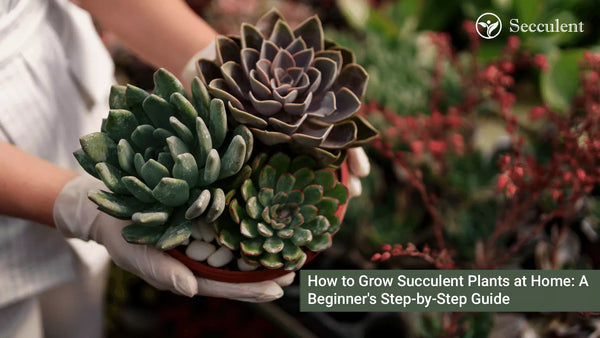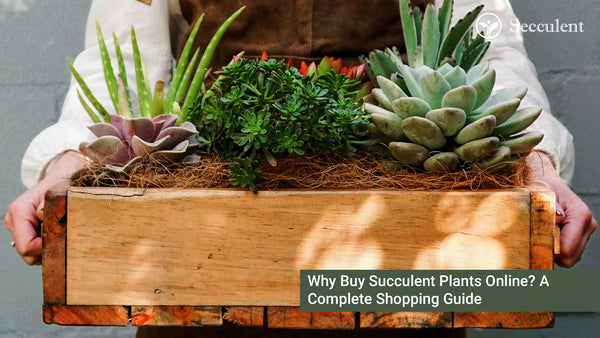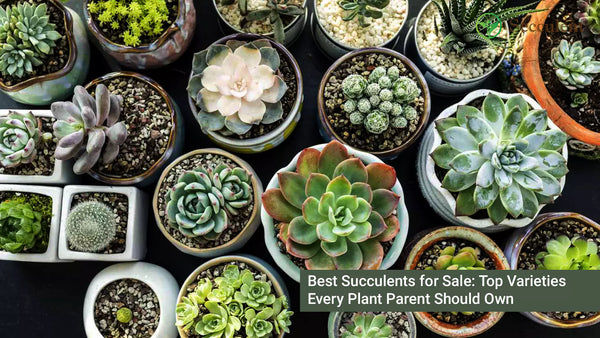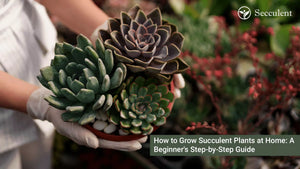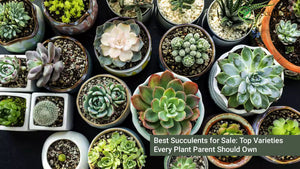7 Common Succulent Mistakes (And How to Avoid Them)

Succulents are the perfect blend of beauty and resilience. However, despite their reputation as “hard-to-kill” plants, many succulent owners unknowingly make mistakes that lead to droopy leaves, stunted growth, or even plant death. If you’re struggling to keep your succulents thriving, don’t worry. This post will uncover seven common mistakes people make with succulents and, more importantly, how to fix them.
By understanding these missteps, you'll be one step closer to cultivating happy, healthy plants. Whether you’re a new plant parent or a seasoned succulent lover, you’ll walk away with actionable tips to grow a thriving indoor or outdoor succulent garden.
Mistake 1: Overwatering Your Succulent
Succulents may look lush and juicy, but don’t assume they love water as much as a fern or palm. Overwatering is one of the leading causes of succulent demise. Their thick leaves are designed to store water, allowing them to survive in drought-prone conditions. Too much moisture can overwhelm their root systems, leading to root rot.
How to Avoid This
- Water sparingly. Allow the soil to dry out completely between waterings.
- During active growth seasons (spring and summer), water every 1–2 weeks. Reduce watering to once a month in winter.
- Invest in a moisture meter if you’re unsure when to water.
Pro Tip: Always check the soil with your finger (about an inch below the surface). If it feels damp, hold off watering.
Mistake 2: Planting Succulents in Poor Drainage Soil
Succulents hate sitting in soggy soil. Many store-bought potting mixes retain too much water, which can suffocate their roots. Using the wrong type of soil can make or break your succulent success.
How to Avoid This
- Use a well-draining cactus soil mix. These are specially formulated to promote airflow to the roots and quickly drain excess water.
- For a DIY option, mix standard potting soil with sand (a 1:1 ratio) or perlite for better drainage.
Pro Tip: If repotting a succulent, gently brush off old, wet soil from its roots before placing it into a new, dry medium.
Mistake 3: Using Containers Without Drainage Holes
Succulents are low-maintenance, but they demand great container drainage. Pots without drainage holes can trap water, drowning your plants before you even realize it.
How to Avoid This
- Always choose pots with drainage holes at the bottom. This helps excess water escape.
- If your container doesn’t have drainage holes, use it as a decorative outer pot and place your succulent in a smaller inner pot with proper drainage.
Pro Tip: If you absolutely must use a pot without drainage holes, add a layer of pebbles at the bottom to reduce the risk of waterlogging. However, this approach isn’t foolproof and requires very careful watering.
Mistake 4: Placing Succulents in Improper Lighting
Succulents thrive on sunlight. While many species tolerate low light conditions, lack of adequate sunlight can lead to “stretching,” where the plant grows tall and leggy as it searches for light. This is known as etiolation.
How to Avoid This
- Place your succulent in bright, indirect sunlight. East- or south-facing windows are ideal.
- If growing indoors, supplement with grow lights. A good LED grow light can emulate sunlight and keep your plant happy.
- Rotate your succulents weekly to ensure even sunlight exposure.
Pro Tip: Slowly adjust newly purchased succulents to direct sunlight to prevent sunburn.
Mistake 5: Neglecting Pest Prevention
Yes, even hardy succulents can fall victim to pests like aphids, mealybugs, and spider mites. Left untreated, a pest infestation can weaken your plant, making it susceptible to diseases.
How to Avoid This
- Inspect your plants regularly, especially the undersides of leaves, for any signs of pests.
- Use insecticidal soap or neem oil spray to treat infestations naturally.
- Keep plants dust-free by wiping them occasionally with a soft, damp cloth, as pests are attracted to dusty leaves.
Pro Tip: Isolate newly purchased or gifted succulents for a few weeks before adding them to your collection. This quarantine period prevents pest issues from spreading.
Mistake 6: Ignoring Seasonal Changes
Succulents adjust their growth cycles according to the seasons. Ignoring these natural cycles can disrupt their growth or encourage unhealthy habits like overwatering during dormant periods.
How to Avoid This
- During the active growing seasons (spring and summer), provide more water and fertilizer to promote healthy development.
- Reduce watering significantly in fall and winter when most succulents enter dormancy.
- Adjust light exposure as days grow shorter, ensuring your succulents still receive adequate (but not harsh) sunlight.
Pro Tip: Not all succulents follow the same dormancy patterns. For example, some varieties, like Aeoniums, are dormant in summer instead of winter.
Mistake 7: Overcrowding Succulents
It’s tempting to cluster a variety of succulents together for aesthetic purposes, but overcrowding can lead to stunted growth and other issues. Plants competing for nutrients, water, and space won’t thrive.
How to Avoid This
- Give each succulent its own dedicated space to spread out, both above the soil and in the root zone.
- Follow the spacing guidelines recommended for your specific succulent species.
- If planting multiple succulents in the same container, choose those with similar growth requirements and ensure adequate spacing.
Pro Tip: Regularly repot succulents that outgrow their containers to avoid root-bound growth.
Nurturing a Thriving Succulent Collection
Growing a succulent collection isn’t just a rewarding hobby; it’s a way to beautify your living space effortlessly. By avoiding these common mistakes, you’ll create the perfect environment for your succulents to thrive, adding a touch of nature's charm to your home.
Curious about your succulent care game? Sign up for our newsletter for troubleshooting tips, exclusive deals on supplies, and insights into rare succulent varieties. Your budding green thumb will thank you!


